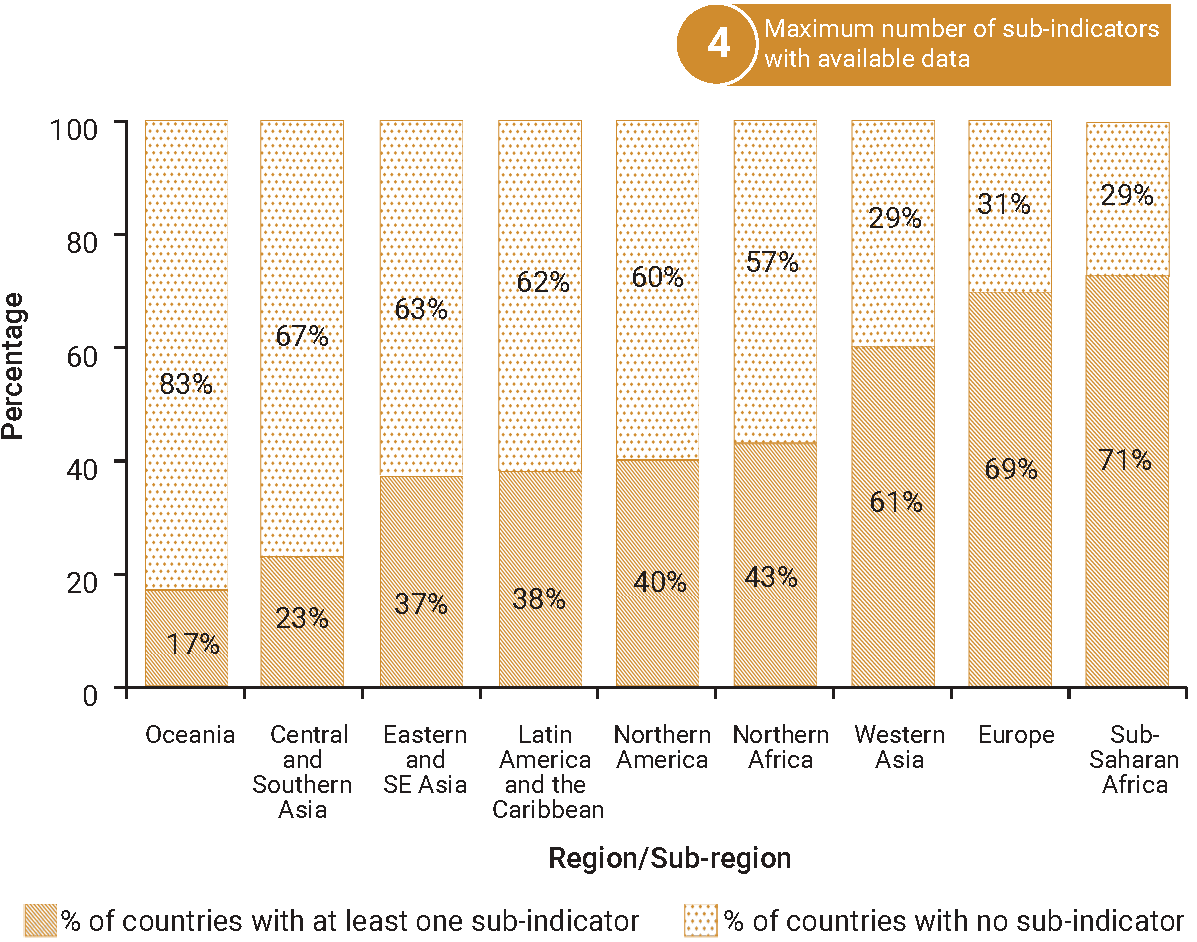SDG Indicator 6.3.2: Proportion of bodies of water with good ambient water quality
1. Key features and metadata
Definition: This indicator monitors the percentage of water bodies (rivers, lakes and groundwater) in a country with good ambient water quality. Overall water quality is estimated based on an index composed of five core parameter groups.
| Sub-indicator | Disaggregated by |
|---|---|
|
EN_H2O_OPAMBQ Proportion of open water bodies with good ambient water quality (%) |
No current data disaggregation available.
|
|
EN_H2O_RVAMBQ Proportion of river water bodies with good ambient water quality (%) |
|
|
EN_H2O_GRAMBQ Proportion of groundwater bodies with good ambient water quality (%) |
|
|
EN_H2O_WBAMBQ Proportion of bodies of water with good ambient water quality (%) |
Sources of information: Global Environment Monitoring System for Freshwater (GEMS/Water), national focal points in relevant Ministries, Water Authorities, National Statistical Offices, or nominated representatives.
Related SDG Indicators: 6.3.1 (Proportion of domestic and industrial wastewater flows safely treated), 6.6.1 (Change in the extent of water-related ecosystems over time) and 14.1.1 ((a) Index of coastal eutrophication; and (b) plastic debris density).
2. Data availability by region, SDG Global Database, as of 02 July 2025

3. Proposed disaggregation, links to policymaking and its impact
|
Proposed disaggregation |
Link to policymaking |
Impact |
|---|---|---|
|
Proportion of bodies of water with good ambient water quality, by river basin [1])and by water body (%)(UNEP 2023b) Applies to:
|
This disaggregation aims at monitoring the percentage of water bodies (rivers, lakes and groundwater) in a country with good ambient water quality at the river basin level(UNEP 2023b; UNEP 2023c). Because the impacts of poor water quality are felt locally and water is also managed locally, data at the river basin level accounting for the geographical and hydrological features as well as the socio-economic context, with upstream and downstream interactions, are a better fit to address multidimensional water management issues(United Nations Educational, Scientific and Cultural Organization [UNESCO] 2009a). The disaggregation provides relevant sub-national data and can support informed decision-making at the national and sub-national levels to monitor water quality and improve water management measures. It is also relevant for countries with transboundary waters, where efforts to assess and manage water quantity and quality should be coordinated(UNEP 2021a). It is supportive of the Integrated Water Resource Management (IWRM) approach, a fundamental policy tool for promoting water sustainable development(UN n.d.b). |
This disaggregation contributes to the implementation of IWRM, a coordinated and cross sectoral policy instrument which encompasses the various ecological, social and economic dimensions of water resources management and aims at protecting aquatic ecosystems, land and related natural resources in addition to improving human health and hygiene, social inclusiveness and economic growth through better access to water resources of good quality. By providing more detailed and local information, the monitoring of the water status at the river basin level helps in identifying and reducing sources of pollution (e.g. municipal and industrial wastewater, diffuse pollutions from agriculture or from urban settlements). In doing so, leading to the supply of water of good quality for multiple uses. In particular, for more vulnerable populations that are most dependent on in situ water availability and quality. In addition, when practiced in a participatory manner,river basin water management is supportive of the democratization of society and good governance(UNEP 2024a). |
[1]River basins are also referred to as Reporting Basin Districts and apply to rivers, lakes and aquifers (UNEP 2023c).

